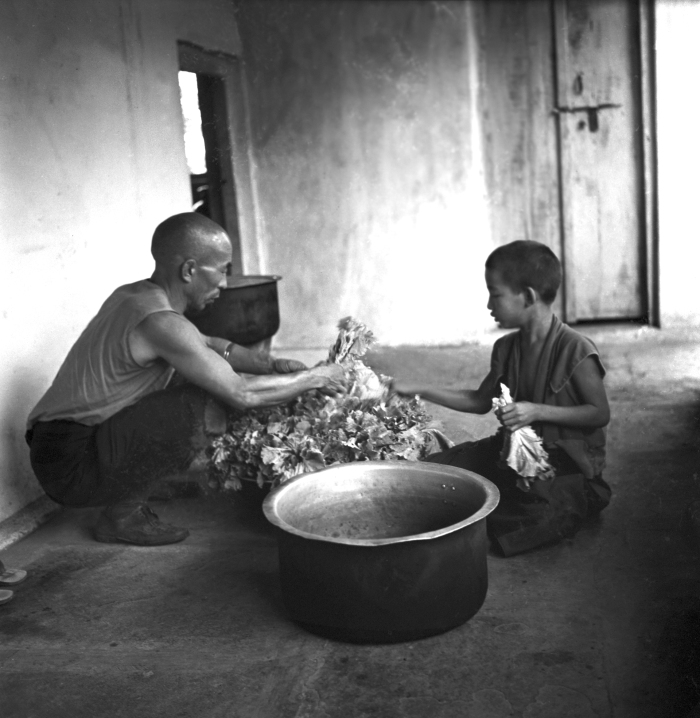When I first came to Drepung in Mundgod in 1978 and settled into the monastery routine, I became accustomed to seeing the large flat bread that formed the core of the monk’s diet circulating the camp around 11 am each day, piled high on the head of child monks who took turns to collect it from the kitchen for their teachers. The monks would then settle on their verandas, sitting cross legged in a circle and tear off chunks of bread dipping it into a large enamel mug filled with Tibetan tea. They were still very attached to Tibetan tea, which the local doctors said was the worst possible combination for cholesterol and high blood pressure. The monks estimated they were lucky; in Tibet, the monastery did not provide regular meals, only tea and tsampa or noodles, but mostly tea at the morning assembly. Their families usually sent them bags of tsampa, but for those monks who came for far away Kham or Amdo, life was hard.
As I watched them eat bread and Tibetan tea, and an occasional thukpa, white flour doughy chunks in an oily broth with a few pieces of meat floating here and there, I asked them why they didn’t eat vegetables. The answer was always that vegetables were expensive, vegetables had no taste. They didn’t believe in vegetables. Diabetes and stomach cancer were rampant, and the children all had boils. It was true, they had no money to eat better, and if they had, meat and chili had precedence over vegetables. Fruits? That was for children, though the children’s teachers could only rarely provide it. Papayas grew everywhere, but the taste and textures evoked a grimace of disgust. The Tibetan settlers usually fed them to pigs.
Ten years later, the bread was still there, though spinach, turnips, carrots and even pineapples and grapes now accompanied it. Papayas were accepted and even appreciated by some.














 When I returned to Drepung Loseling in 2016, the bread was still the main feature of the morning meal, but vegetables were well integrated into the diet and the evening thukpa was full of them. I visited the kitchen, serviced by the monks in rotation. Vegetables were bought in bulk and piled high on metal shelves and noodles came from the College’s own noodle machines. Diabetes was still rampant among the older monks, but I found all of them watching their diets with care and lauding the benefits of exercise. Boils and ringworm were a bad memory of the past.
When I returned to Drepung Loseling in 2016, the bread was still the main feature of the morning meal, but vegetables were well integrated into the diet and the evening thukpa was full of them. I visited the kitchen, serviced by the monks in rotation. Vegetables were bought in bulk and piled high on metal shelves and noodles came from the College’s own noodle machines. Diabetes was still rampant among the older monks, but I found all of them watching their diets with care and lauding the benefits of exercise. Boils and ringworm were a bad memory of the past.